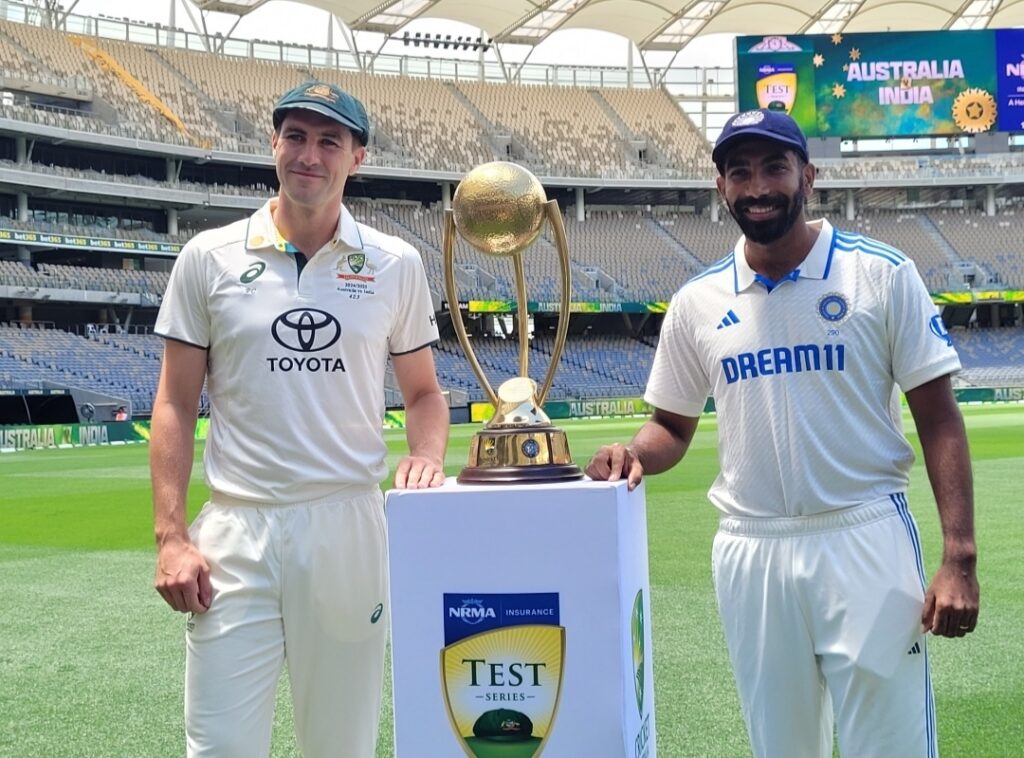
In the heavyweight India-Australia contests in Test cricket, there has been a clear pattern over the last seven years – Barring the World Test Championship final, the Men from Down Under have been struggling to seize crucial moments. Let’s delve deeper into this particular assertion by transporting ourselves back in time to the Bengaluru Test in 2017.
After bundling out India for just 189, it felt as if Australia were well on their way to seal a historic Test series in India. However, when the score read 134 for 2, Australia lost wickets at regular intervals and were bowled out for 276. On the back of some impressive performances in the second innings and R Ashwin’s six-for, India clinched a famous 75-run victory.
In the very next Test in Dharamsala, Australia had found themselves in a rather good position at 200 for 3, with Steven Smith scoring a hundred. Just that they again lost wickets in bunches. Ultimately, the hosts emerged victorious by 8 wickets to take home the Border-Gavaskar Trophy. More than a year later, Australia couldn’t seize crucial moments after snuffing out India for 250 in Adelaide and slid to a defeat. In the memorable 2020-21 series, the narrative wasn’t a great deal different.
After Australia crushed India by 10 wickets in Adelaide, they couldn’t convert a position of strength into a victory in Sydney. Hanuma Vihari and Ashwin held fort to steer India to a draw. And then came the shocker at the Gabba. Despite India missing several of their key players, the visitors came out on top and once more hoisted the Border-Gavaskar Trophy.
To put that mind-numbing victory into perspective, when Australia previously lost a Test at the Gabba, in 1988-89, they had to face an attack consisting Curtly Ambrose, Courtney Walsh, Patrick Patterson and Malcolm Marshall. It took more than three decades for Australia to slip to another defeat in the longest format at that venue, and it came against an inexperienced bowling line-up comprising Washington Sundar, Shardul Thakur, T Natarajan and Navdeep Saini.
Last year, the theme wasn’t any different in Delhi. In pursuit of Australia’s score of 263 in the first innings, India were in a spot of bother at 139 for 7. Axar Patel’s stand with Ashwin charted a recovery as India yet again posted a come-from-behind victory over their counterparts. In the ongoing Test series, Australia cleaned up India for 150 in the Perth Test, only for the tourists to hit back with the ball and gain a healthy 46-run lead. At stumps, India had extended the lead to 218 with all 10 wickets intact.
While going through the above-mentioned examples, a question arises in the mind – Why have Australia grappled to turn strong positions into victories time and again versus India in the longest format? There is an old idiom that says, “winning is a habit.” Somewhere the Indian camp seem to have developed more than enough belief, which is helping them to chart some amazing turnarounds while facing their nemesis – home or abroad – in the longest format.
Having said all that, it is not like Australia have given up on a platter. For instance, in the Gabba Test, Cheteshwar Pujara did cop enough blows on his body while essaying a gutsy hand of 56 off 211 deliveries. And it took a believe-it-or-not knock from Rishabh Pant to guide India to possibly their finest-ever Test win. So, the visitors were made to work unbelievably hard to script a jailbreak. The crux of the matter, however, doesn’t change. Australia came second-best, despite having the upper hand at different stages of that encounter.
There is still a silver lining for the Australian set-up. Only two out of the potential 25 days of the series have concluded. The Indian team is also going through a transition phase in the longest version of the game. The likes of Ajinkya Rahane, Pujara, Ishant Sharma and Co. aren’t part of the series, while Virat Kohli has been in poor form.
Rohit Sharma, who could return for the second Test, hasn’t been in good nick either. So, there is still an opportunity for the home team to find the right key and change the narrative in the remaining part of the series. For now, though, India seem to have the slight mental edge over their famed rivals in Test cricket.



